Complete Solutions to Unsolved Numerical Problems of chapter GEOMETRICAL OPTICS of Class 12 book with complete answers and questions
| Class 12 | PHYSICS |
| Chapter | GEOMETRICAL OPTICS |
| PHYSICS GALAXY | Unsolved Numerical Problems |
| Number Of Questions | 100 |
| Academic Year | 2023-24 |
The left end of a long glass rod of index 1.6350 is grounded and polished to a convex spherical surface of radius 2.50 cm. A small object is located in the air and on the axis 9.0 cm from the vertex. Find the lateral magnification.
View SolutionFocal length of a convex lense in air is `10cm`. Find its focal
length in water. Given that `mu_g=3//2` and `mu_w=4//3`.
View SolutionFind the distance of an object from a convex lens if image is
two times magnified. Focal length of the lens is `10cm`
View SolutionA pile 4m high driven into the bottom of a lake is 1m above the `
`water . Determine the length of the shadow of the pile on the bottom of the lake if `
` the sun rays make an angle of `45^@` with the water surface . The refractive index`
` if water is `4/3`. `
View SolutionAn object is placed `12 cm` to the left of a diverging lens of focal length `-6.0 cm.` A converging lens with a focal length of `12.0 cm` is placed at a distance d to the right of the diverging lens. Find the distance d that corresponds to a final image at infinity.
View SolutionA solid glass sphere with radius R and an index of refraction `1.5` is silvered over one hemisphere. A small object is located on the axis of the sphere at a distance 2R to the left of the vertex of the unsilvered hemisphere. Find the position of final image after all refractions and reflection have taken place.
View SolutionA glass sphere with `10 cm` radius has a `5 cm` radius spherical hole at its centre. A narraow beam of parallel light is directed into the sphere. Where, if anywhere, will the sphere produce an image? The index of refraction of the glass is `1.50.`
View SolutionA source of light is located at double focal length from a convergent lens. The focal length of the lens is `f=30cm.` At what distance from the lens should a flat mirror be placed, so that the rays reflected from the mirror are parallel after passing through the lens for the second time?
View SolutionA parallel beam of rays is incident on a consisting pf three thin lenses with a common optical axis. The focal length of the lenses are equal to `f_1=+10 cm and f_2=-20 cm, and f_3=+9 cm` respectively. The distance between the first and the second lens is `15 cm` and between the second and the third is `5 cm.` Find the position of the point at which the beam converges when it leaves the system of lenses.
View SolutionA ray of light is incident on the left vertical face of glass cube of refractive index `n_2,` as shown in figure. The plane of incidence is the plane of the page, and the cube is surrounded by liquid (refractive index`=n_1`). What is the largest angle of incidence `theta_1` for which total internal reflection occurs at the top surfaces?

View SolutionOne face of a prism with a refrective angle of `30^@` is coated with silver. A ray of light incident on another face at an angle of `45^@` is refracted and reflected from the silver coated face and retraces its path. What is the refractive index of the prism?
View SolutionIn an isosceles prism of prism angle `45^(@)`, it is found that when the angle of incidence is same as the prism angle, the emergent ray grazes the emergent surface. Find the refractive index of the material of the prism.For what angle of incidence the angle of deviation will be minimum ?
View SolutionAn astronomical telescope with objective of focal length 100 cm and eyepiece of focal length 10 cm is used by a shortsighted man whose far point is 33 cm from his eye, to form an image of an infinitely distant object at his far point. Find the separation of the lenses, and magnification obtained.
View SolutionFigure shows a right angled prism ABC having refractive `mu_(g)=(3)/(2)` lowered into water `(mu_(omega)(4)/(3))`. Find angle `alpha` so that the incident ray normal to face AB will be reflected at face BC completely.
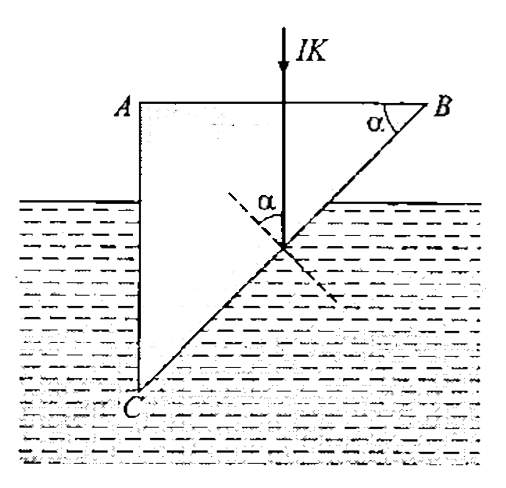
View SolutionAn equilateral prism deviates a ray through `40°` for two angles of incidence. The two incidence angels differ by `20°`. Find their values.
View SolutionA ray of light strikes a glass slab of thickness t.
(i) Prove that it emerges on the opposite face, parallel to the initial ray.
(ii) (ii) Prove that the value of deflection of beam which passed through the plate is :
`t sini_(1)[1-sqrt(((1-sin^(2)i_(1))/(._(a)mu_(g)^(2)-sin^(1)i_(1))))]`
(iii) Prove that for a small angle of incidence `i_(1)`, the internal shift x is given by
`x=t i_(1)(1-(1)/(._(a)mu_(g)))`
where `._(a)mu_(g)` is the refractive index of glass with respect to air.
View SolutionA plano-convex lens has thickness 4cm. When places on a horizontal table with the curved surface in contact with it, the apparent depth of the bottom-most point of the lens if found to be 3cm. If the lens is inverted such that the plane face is in contact with the table, the apparent depth of the center of the plane face of the lens is face of the lens is found to be `25//8` cm. Find the focal length of the lens.
View SolutionAn image Y is formed of a point object x by a lens whose optic axis is AB as shown in Figure. Draw a ray diagram to locate the lens and its focus. If the image Y of object X is formed by a concave mirror (having the same optic axis AB) instead of lens, draw another ray diagram to locate the mirror and its focus. Write down the steps of construction of the ray diagrams.

View SolutionA thin plano-convex lens.of focal length `f` is split into two halves : One of the halves is shifted along the optical axis (figure)The separation between object and image planes is 1.8m.The magnification of the image formed by one of the half lensis 2. Find the focal length of the lens and separation between the two halves. Draw the ray diagram for image formation.
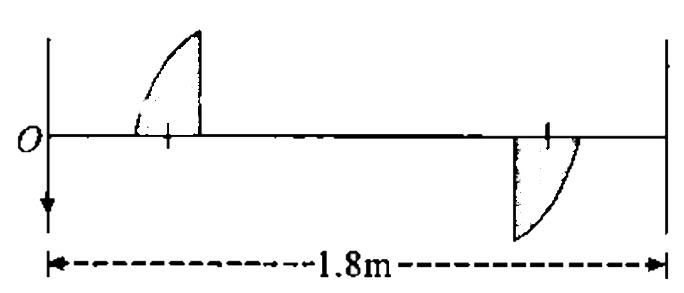
View SolutionThe focal lengths of the objective and the eye piece of a compound microscope are 1cm and 5cm respectively. An object placed at a distance of `1:1` cm from the objective has its final image formed at (i) infinity (ii) least distance of distinct vision. Find the magnifying power and the distance between the lenses. Least distance of distinct vision is 25 cm.
View SolutionFind the minimum size of mirror required to see the full image of a wall behind a man standing at the centre of room, where H is the height of wall.
View SolutionTwo mirrors are inclined by an angle `30^(@)`. An object is placed making `10^(@)` with the mirror My Find the positions of the first two images formed by each mirror. Find the total number of images.
View SolutionAB is a man of height 2m and M is a mirror of length 0.5m and mass 0.1 kg. Initially top of mirror M and A are at the same level and the M starts falling freely always remaining vertical. If the level of the eyes of the manis 1.5 cm below his head. A, find the time after which the man sees the reflection of his feet.
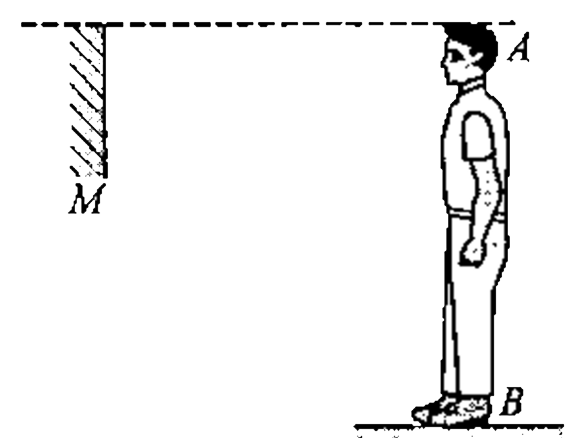
View SolutionFigure. Shows a point object A and a plane mirror MN. Find the position of the image of object A, in mirror MN, by drawing ray diagram. Indicate the region in which the observer's eye must be present in order to view the image. (This region is called field of view.)
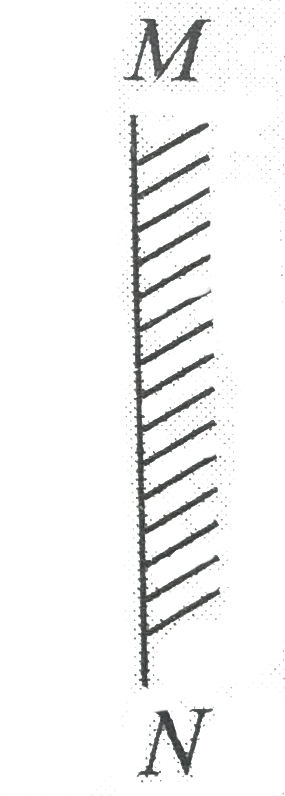
View SolutionFind the region on Y-axis in which reflected rays are present. Object ia at `A(2,0)` and MN is a plane mirror, as shown in Figure.
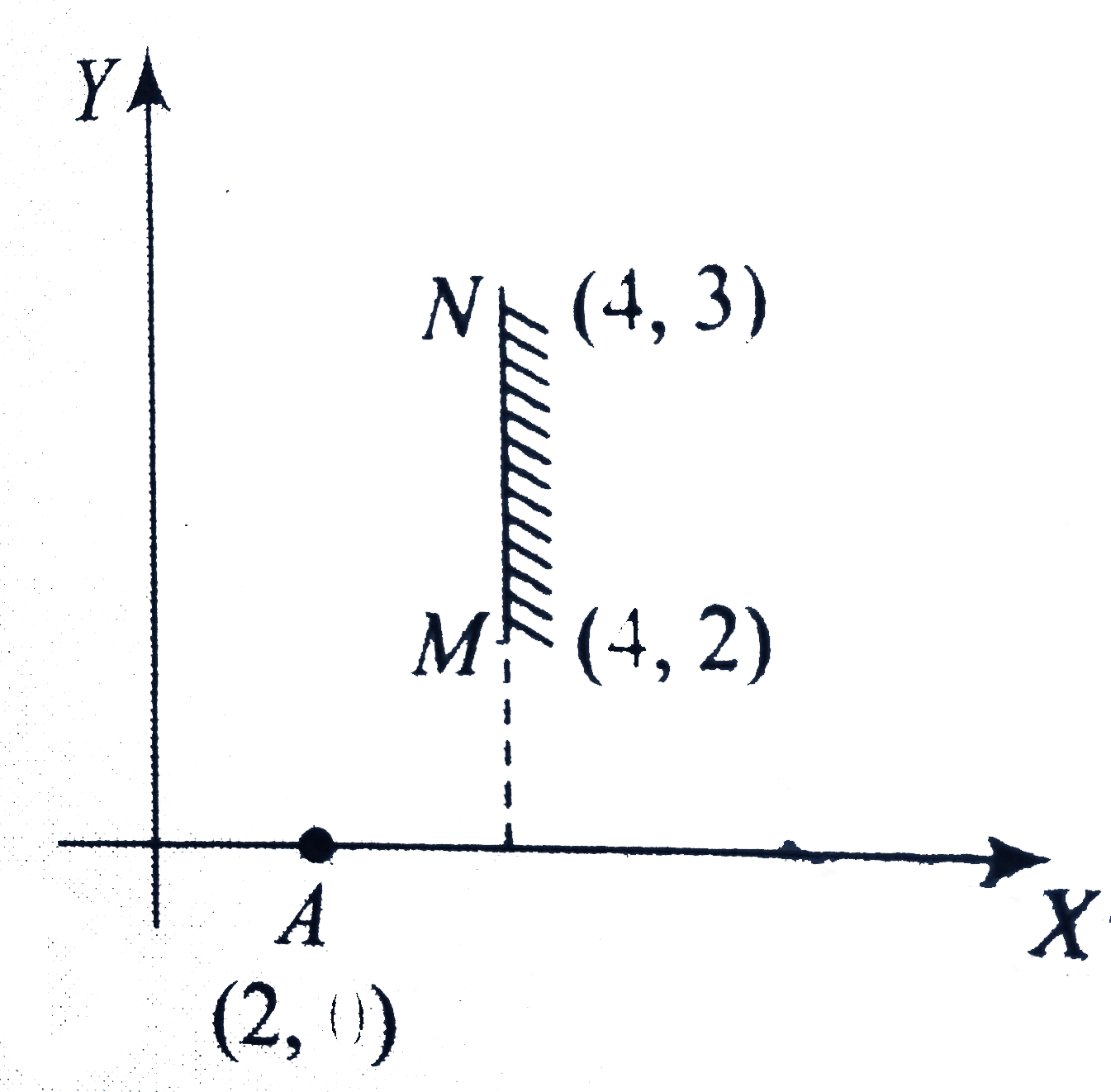
View SolutionSee the following figure. Which of the object(s) shown in `O_(2)` figure will not form its image in the mirror.

View SolutionTwo plane mirrors are inclined at an angle of `75^(@)` to each other. Find the total number of images formed when an object is placed as shown in figure
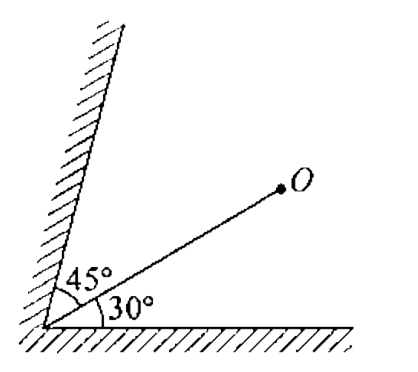
View SolutionTwo plane mirrors are inclined at an angle of `70^(@)` to each other. Find the total number of images formed when object is placed as shown. In figure-. Total images = 5
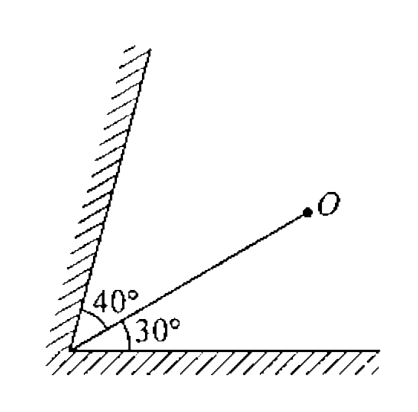
View SolutionThere is a point object and a plane mirror. If the mirror is moved by 10cm away from the object, find the distance which the image will move.
View SolutionA crown glass prism of refracting angle `8^(@)` is combined with a flint glass prism to obtain deviation without dispersion. If the refractive indicates for red and violet rays for the crown glass are 1.514 and 1.524 and for the flint glass are 1.645 and 1.665 respectivey, find the angle of flint glass prism and net deviation.
View SolutionAn opaque cylindrical tank with an open top has a diameter of `3.00m` and is completely filled with water .When the setting sun reaches an angle of `37^(@)` above the horizon,sunlight ceases to illuminate any part of the bottom of the tank .How deep is the tank?
View SolutionIn the situation shown in figure, find the velocity vector of image in the co-ordinate system shown in figure
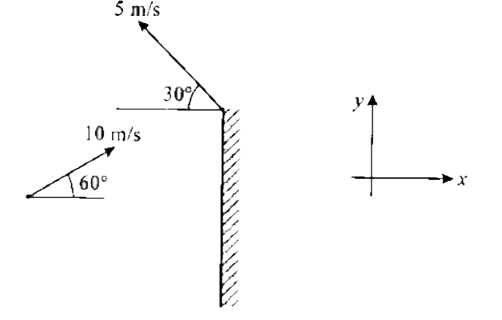
View SolutionFind the velocity of the image of a moving object in situation shown in figure in which object and mirror velocities in horizontal and vertical directions are shown.
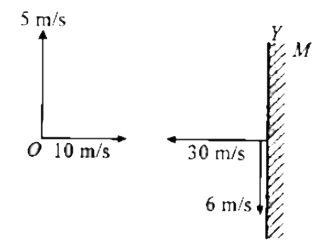
View SolutionTwo plane mirrors are inclined to each other at an angle `30^(@)` to each other. A ray of light is incident at an angle of `40^(@)` to the mirror `(M_(1))`. Find the total angle of deviation of the ray after the third successive due to mirrors.
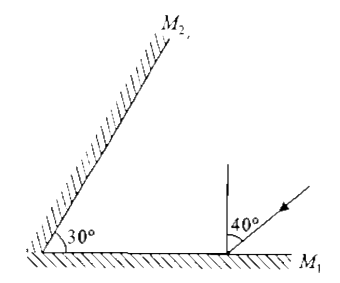
View SolutionFigure shows a torch producing a straight light beam falling on a plane mirror at an angle `60^(@)` The reflected beam makes a spot P on the screen along y-axis . If at t=0, mirror starts ratating about the hinge A with an angular velocity `(omega)=1^(@)` per second clockwise. Find the speed of the spot on screen after time t = 15 s.
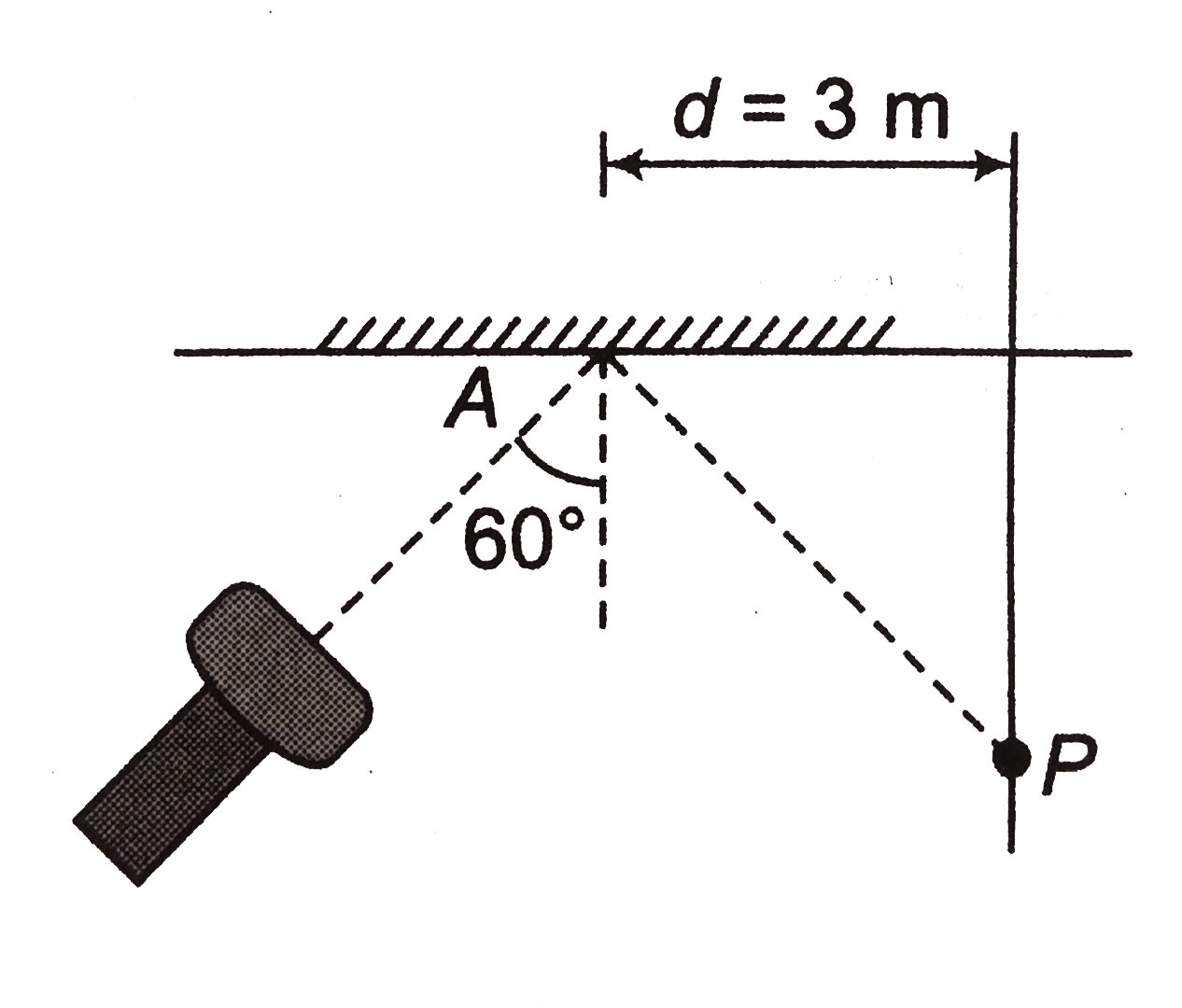
View SolutionA light ray `I` is incident on a plane mirror `M`.The mirror is rotated in the direction as shown in the figure by an arrow at frequency `(9)/(pi) "rev"//"sec"`,The light reflected by the mirror is received on the wall `W` at a distance `10m`from the axis of rotation .When the angle of incidence becomes `37^(@)`find the speed of the spot (a point) on the wall?
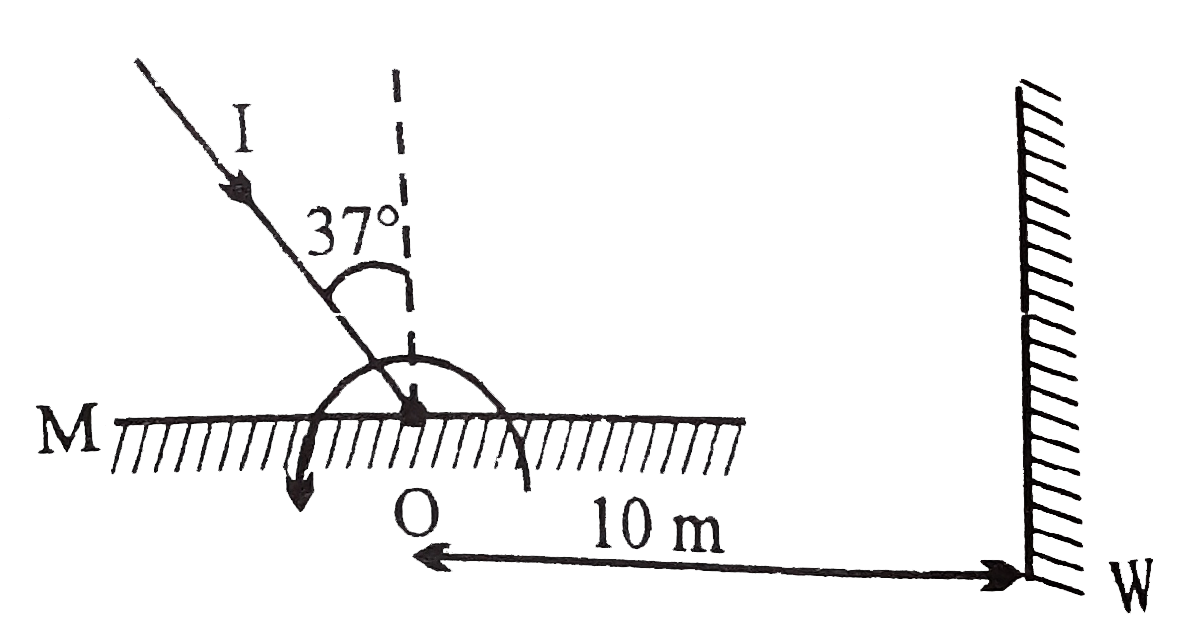
View SolutionA spherical light bulb with a diameter of `3.0cm` radiates equally in all the directions with a power of `4.5piW.`(a find the light intensity of the surface of the bulb.(b) Find the light set up with its axis pointing towards the bulb.The lens has a circular face with a diameter of `15.0cm`and a focal length of `30.0cm`Find the diameter of the image of the bulb formed on a screen kept at the location of the image .(d)Find the light intensity at the image.
View SolutionA coin lies on the bottom of a lake 2 m deep at a horizontal distance x from the spot light S which is a source of thin parallel beam of light situated 1 m above the surface of the liquid of refractive index p= as shown in figure. The liquid height is 2m. Find x so that a narrow beam of light from S when incident on the liquid surface at incidence angle `45^(@)` fells directly on the coin
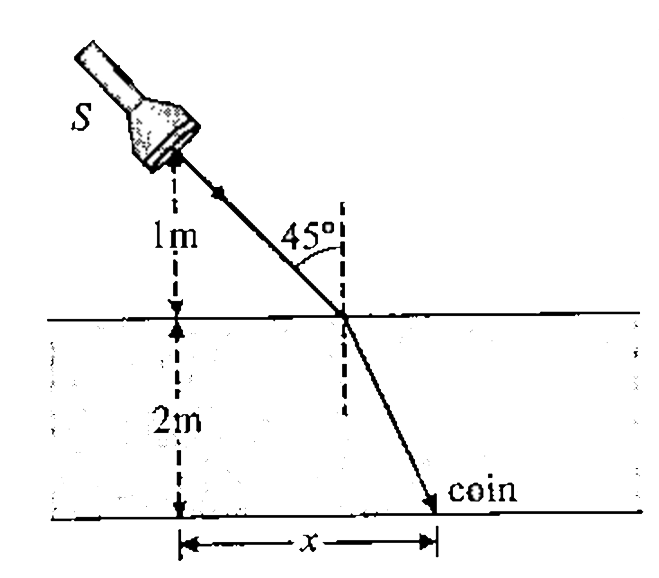
View SolutionWhat should be the value of angle `theta` so that light entering normally through the surface AC of a prism `(n=3//2)` does not cross the second refracting surface AB?
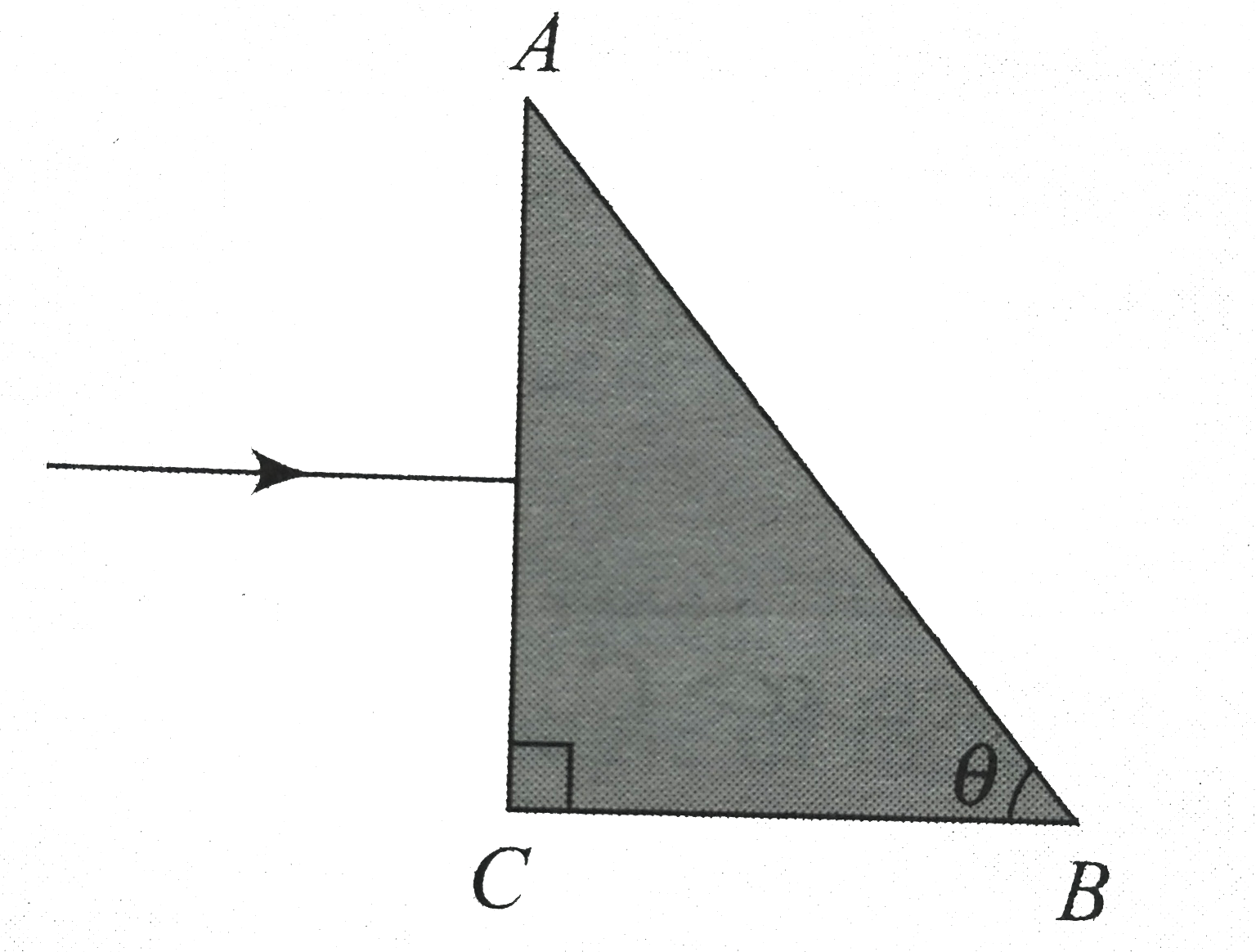
View SolutionRefracting angle o f a prism `A=60^@` and its refractive index is `n=3//2`. What is angle of incidence i to get minimum deviation. Also, find the minimum deviation. Assume the surrounding medium to be air `(n=1)`.
View SolutionThe refractive indices of flint glass for red and violet lights are 1.613 and 1.632, respectively. Find the angular dispersion produced by a thin prism of flint glass having refracting angle `5^@`.
View SolutionA small object of height `0.5` cm is placed in front of a convex surface of glass `(mu-1.5)` of radius of curvature 10cm. Find the height of the image formed in glass.
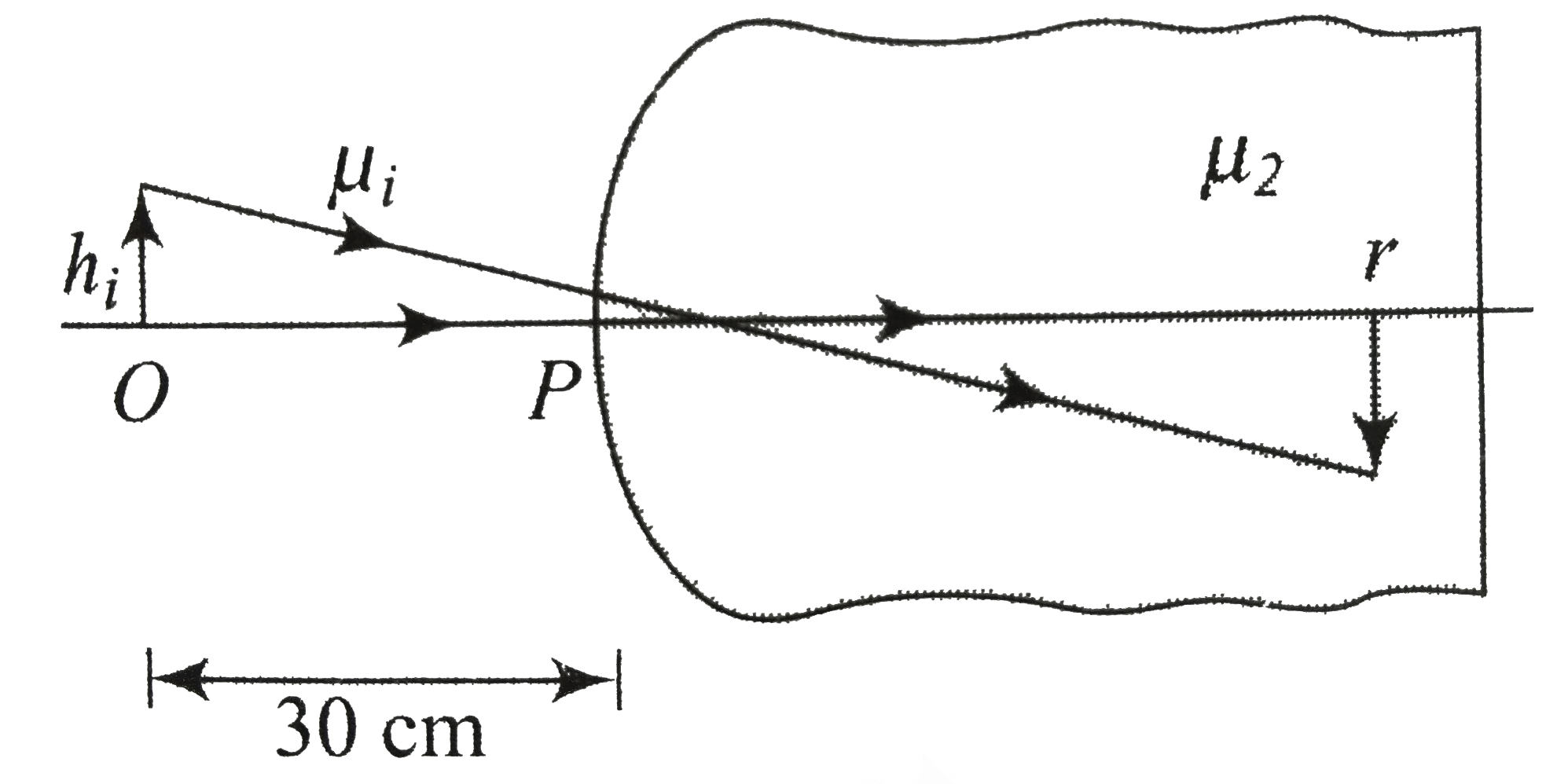
View Solutionin figure shown `AB` is a plane mirror of length `40cm` placed at a height `40cm` from ground . There is a light source `S` at a point on the ground ,Find the maximum and minimum height of a man(eye height)required to see the image of the source If he is standing at a point`A` on ground shown in figure.
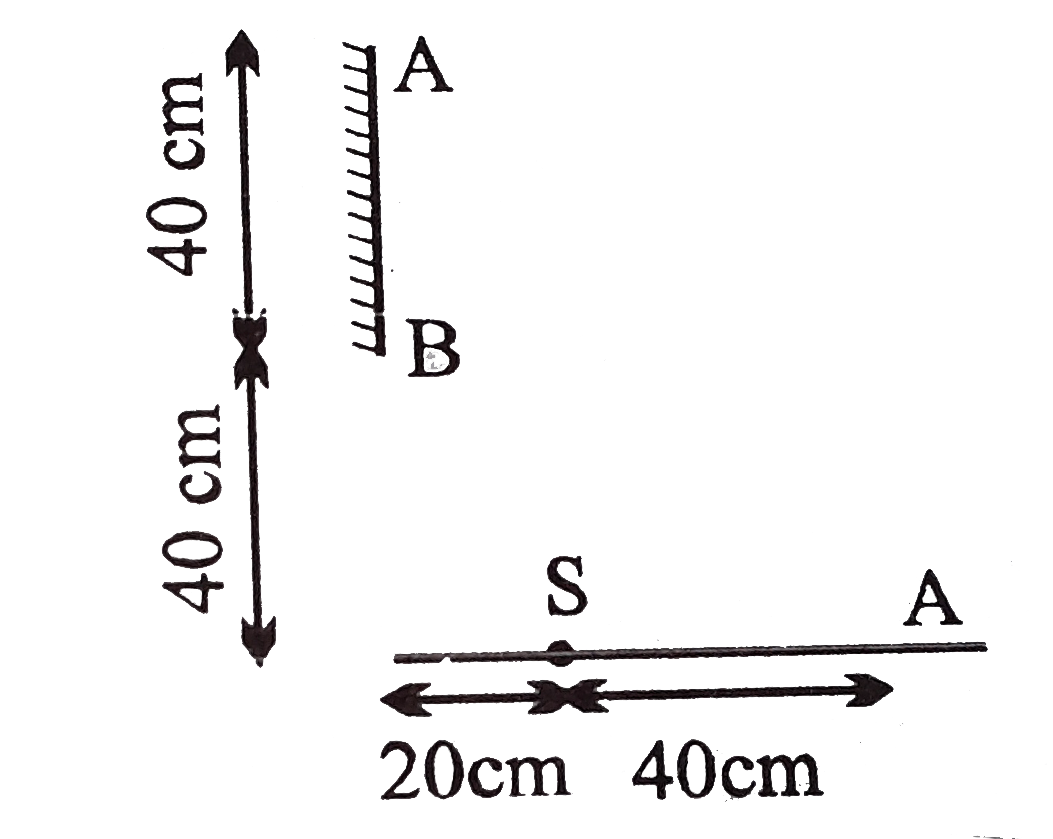
View SolutionA plane mirror of circular shape with radius `r=20cm` is fixed to the ceiling .A bulb is to be placed on the axis of the mirror.A circular area of radius `R=1m` on the floor is to be illuminated after reflection of light from the mirror. The height of the room is `3m` What is maximum distance from the center of the mirror and the bulb so that the required area is illuminated?
View SolutionA room contains air in which the speed of sound is `340m//s.` The walls of the room are made of concrete in which the speed of sound is `1700m//s` (a) Find the critical angle for total internal refection of sound at the concrete-air boundary.(b) in which medium must the sound be travelling to undergo total internal reflection?
View SolutionA glass prism has refractive index `sqrt(2)` and refracting angle `30^(@)` . One of the refracting surface of the prism is silvered. A beam of monchromatic light will retrace it path it its angle of incidence on the unsilvered refracting surface of the prism is
View SolutionPhotograph of the ground are taken form an air-craft ,flying at an altitude of 2000 m by a camera with a lens of focal length `50 cm`. The size of the film in the camera is `18xx18cm`.What area of the ground can be photography by this camera at any one time.
View SolutionAn equilateral prism deviates a ray through`23^(@)`for two angles of incidence differing by `23^(@)`find`mu`of the prism?
View SolutionA plano convex lens `(mu=1.5)` has a maximum thickness of `1mm` .If diameter of its aperture `4cm` Find
(i)Radius of curvature of curved surface
(ii) its focal length in air.
View SolutionA convex lens of focal length 1.5m is placed in a system of coordinate axis such that its optical centre is at origin and principa, axis coinciding with the x-axis. An object and a plane mirror are arrange on theh principal axis as shown in figure. Find value of d (in m) so that y-coordinate of image (after refraction and reflection ) is 0.3m. (Take `tan theta=0.3)`
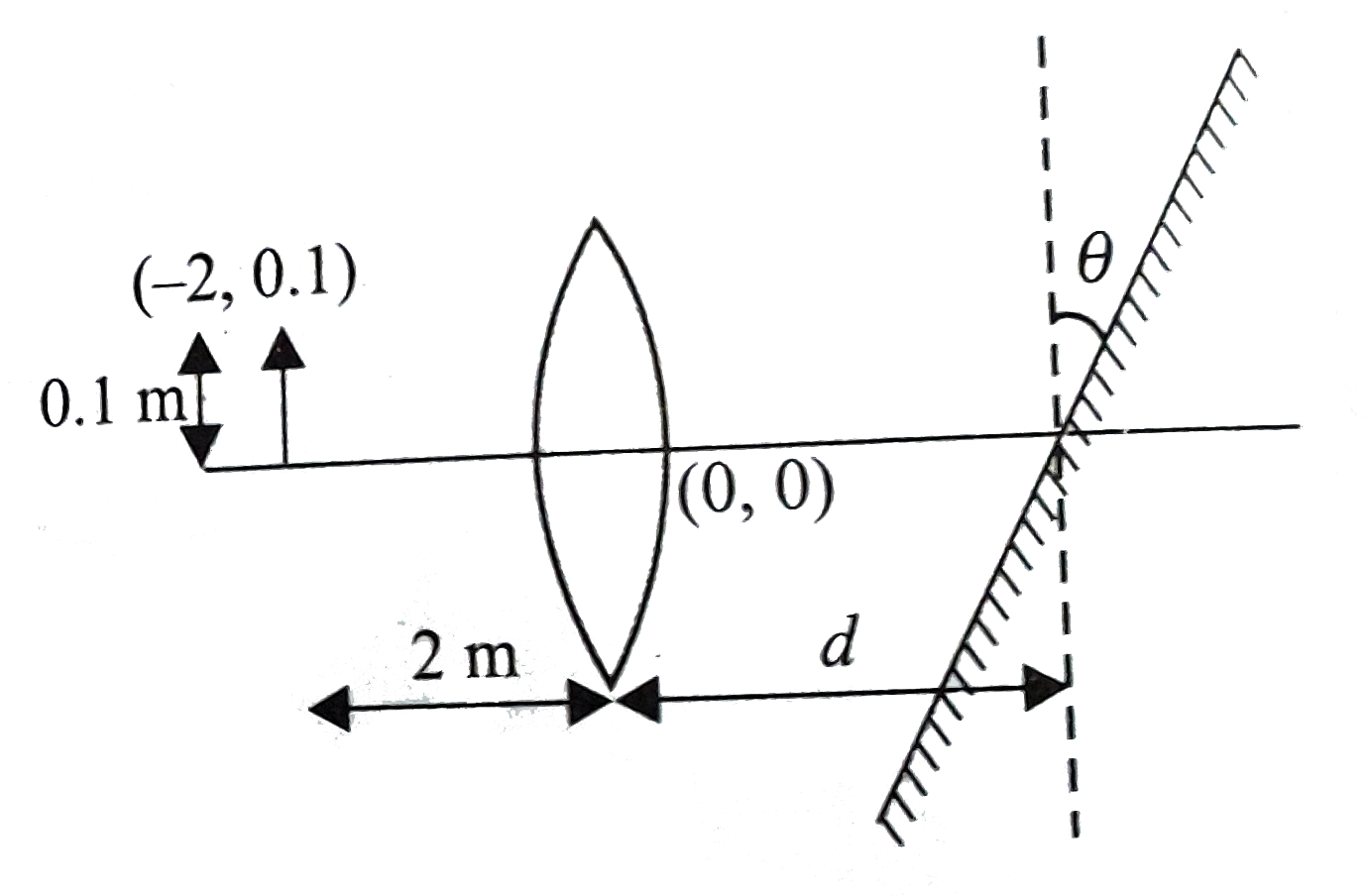
View SolutionA ray in incident normally on a right angle prism whose refractive index is `sqrt(3)` and prism angle `alpha=30^(@)`. After crossing the prism, ray passes through a glass sphere. It strikes the glass sphere at `(R)/(sqrt(3))` distance from principal axis, as shown in the figure. The is half polished. Find the totol angle of deviation of the incident ray after all reflections and refractions from this optical setup
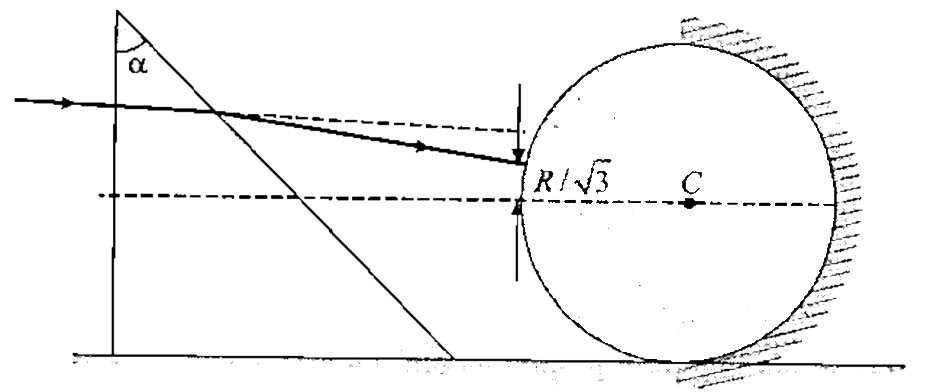
View SolutionA short-sighted man, the accommodation of whose eye is between 12 cm and 60 cm wears spectacles through which he can see remote objects distinctly. Determine the minimum distance at which the man can read a book through his spectacles.
View SolutionA stationary observer O looking at a fish F in water `(mu_(w)=4//3)` through a converging lens of focal length `90.0cm` . The lens is allowed to fall frelly from a height `62.0cm` with its axis vertical. The fish and the observer are on the principal axis of the lens. The fish moves up with constant velocity `100cm//s`. Initially it was at depth of `44.0cm` . Find the velocity (in cm//s) with which the fish appears to move with respect to lens to the observer at `t=0.2 s`. (take `g=10m//s^(2))`

View SolutionAn equilateral prism ABC is placed in air with its base side BC lying horizontally along x-axis as shown in the figure. A ray given by `sqrt(3)z +x=10` is incident at a point P on the face AB of the prism
(a) Find the value `mu` from which the ray grazes the face AB
(b) Find the direction of the initially refracted ray if `mu = (3)/(2)`
(c) Find the equation of ray coming out of the prism if bottom BC is silvered ?
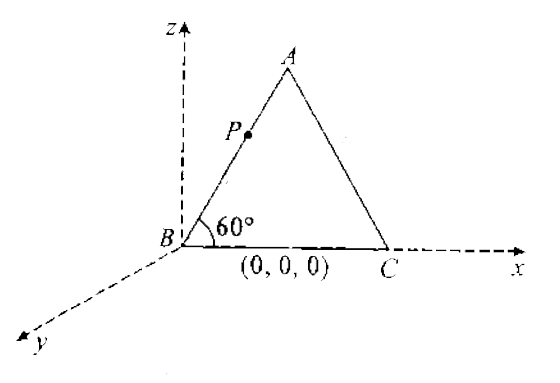
View SolutionA convex lens of focal length 20 cm and a concave lens of focal length 10 cm are placed 10 cm apart with their principal axes coinciding. A beam of light travelling parallel to the principal axis and having a beam diameter 5.0 mm, is incident on the combination. Show that the emergent beam is parallel to the incident one. Find the beam diameter of the emergent beam.
View SolutionA thin convex lens of refractive index `mu=1.5 ` is placed between a point source of Light S and a screen A, shown in figure,. Light rays from the source S are brought to focus on the screen A, forming a point image P. The distance SP is equal to 50cm. Water `(mu=4//3)` is now poured into a vessel interposed between the object and the lens, and it is observed that when the water level is 8cm the screen has to be moved up by a distance of 6cm in order to get a sharp image. Find the focal length of the lens.

View SolutionA thin equiconvex glass lens `(mu_(g)=1.5)` is beign placed on the top of a vessel of height `h=20cm` as shown figure. A luminous point source is beign placed at the bottom of vessel on the principal axis of the lens. When the air is on both the side of the lens the image of luminous source is formed at a distance of 20cm from the lens out side the vessel. When the air inside the vessel is being replaced by a liquid of refractive index `mu_(l)` the image of the same source is being formed at a distance 30cm from the lens outside the vessel. Find the `mu_(l)`.

View SolutionLight passes symmetrically through a `60^(@)` prism of refractive index 1.54. After emergence out from the prism the light ray is incident on a plane mirror fixed to the base of the prism extending beyond it. Find the total deviation of the light ray after reflection from the mirror.
View SolutionA glass rod has ends as shown in figure. The refractive index of glass is `mu`. The object O is at a distance 2R from the surface of larger radius of curvature. The distance between apexes of ends is 3R. Find the distance of image formed of the point object from right hand vertex. What is the condition on `mu` for formation of a real image
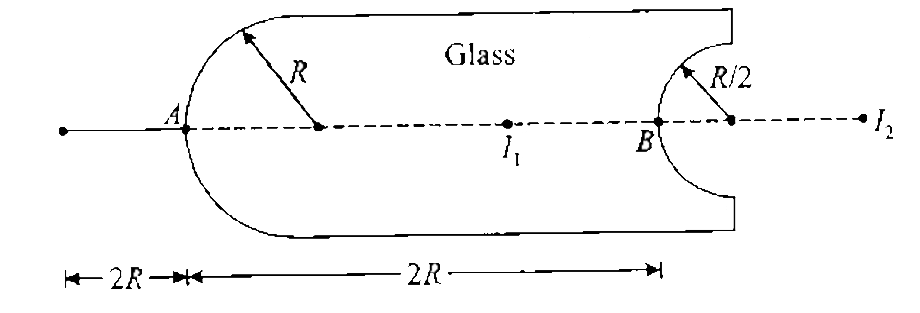
View SolutionWhen the object is placed 4 cm from the objective of a microscope, the final image formed coincides with the object. The final image is at the least distance of distinct vision (24 cm). If the magnifying power of the microscope is 15, calculate the focal lengths of the objective and eye-piece.
View SolutionA hemispherical portion of the surface of a solid glass sphere (mu = 1.5) of radius r is silvered to make the inner side reflecting. An object is placed on the axis of the hemisphere at a distance 3r from the centre of the sphere. The light from the object is refracted at the unsilvered part, then reflected from the silvered part and again refracted at the unsilvered part. Locate the final image formed.
View SolutionThe focal lengths of the objective and the eye-piece of an astronomical telescope are 0.25 m and 0.02m, respectively. The telescope is adjusted to view an object at a distance of 1.5 m from the objective, the final image being 0.25 m from the eye of the observer. Calculate the length of the telescope and the magnification produced by it.
View SolutionA convex lens of focal length 1.5m is placed in a system of coordinate axis such that its optical centre is at origin and principa, axis coinciding with the x-axis. An object and a plane mirror are arrange on theh principal axis as shown in figure. Find value of d (in m) so that y-coordinate of image (after refraction and reflection ) is 0.3m. (Take `tan theta=0.3)`

View SolutionA ball is kept at a height h above the surface of a heavy transparent sphere made of a material of refractive index The radius of the sphere is R. At t = 0, the ball is dropped to fall normally on the sphere. Find the speed of the image formed as a function of time for `tlt sqrt((2h)/g)`. Consider only the image by a single refraction.
View SolutionA prism of angle `60^(@)` is made of glass of refractive index 1.50 for red and 1.56 for violet. Find the angular separation of these rays when a narrow pencil of composite light is incident at minimum deviation.
View SolutionAn achromatic telescope objective of focal length 1.5m is consists of two thin lenses of dispersive power 0.050 and 0.075, respectively, placed in contact. Find the focal length of each lens.
View SolutionCalculate the focal length of a convex lens of crown glass of dispersive power 0.012 and concave lens of dispersive power 0.020 that from an achromatic coverging combination of focal length 0.3 m when placed in contact.
View SolutionIn an astronomical telescope, focal length of objective lens is `75 cm` and that of eye piece is `5 cm` . Calculate the magnifying power and the distance between the two lenses, when final image of distant object is seen at a distance of `25 cm` from the eye.
View SolutionAn astronomical telescope consisting of two convex lenses of focal length 50 cm and 5cm is focussed on the moon. What is the distance between the two lenses in this position ? If the telescope is then turned towards an object 10 m a way, how much would the eye-piece have to be moved to focus on the object without altering the accommodation of the eye ? Calculate the angular magnification produced by the telescope in the two adjustments.
View SolutionHow would you use two plano-convex lenses of focal lengths 6cm and 4cm to design an eye-piece free from chromatic aberration. What will be its focal length and magnifying power for normal vision ? Will it be a positive or negative eye-piece ?
View SolutionA short-sighted person cannot see objects situated beyond 2m from him distinctly. What should be the power of the lens which he should use for seeing distant objects clearly ?
View SolutionAn astronomical telescope in normal adjustment hasa tube length of 93 cm and magnification (angular) of 30. If the eye-piece is to be drawn out by 3 cm to focus a near object, with the final image at infinity, find how far away is the object and the magnification (angular) is this case.
View SolutionThe focal lengths of the objective and the eye-piece of an astronomical telescope are 0.25 m and 0.025 m, respectively. The telescope is focussed on an object 5m from the objective, the final image being formed 0.25 m from the eye of the observer. Calculate the length of the telescope and its magnifying power.
View SolutionA Keplerian telescope with magnification `T = 15` was submerged into water which filled up the inside of the telescope. To make the system work as a telescope again within the former dimensions, the objective was replaced. What has the magnification of the telescope become equal to ? the refractive index of the glass of which the ocular is made is equal to `n = 1.50`.
View SolutionA man stands on vertical tower of height 20 cm. Calculate the distance up to which he will be able to see on the surface of the earth. Neglect the height of the man. Take the radius of the earth `= 6400` km
View SolutionThe redius of curvature of the convex face of a plano-convex lens is 12cm and its refractive index is 1.5.
a. Find the focal length of this lens. The plane surface of the lens is now silvered.
b. At what distance form the lans will parallel rays incident on the convex face converge?
c. Sketch the ray diagram to locate the image, when a point object is places on the axis 20cm from the lens.
d. Calculate the image distance when the object is placed as in (c).
View SolutionAn object is at a distance of `a=36` cm from a lens with a focal length `f=30` cm. A flat mirror turned through `45^(@)` with respect to the optic axis of the lens is placed behind at a distance of `l = 1m`. At what distance `h` from the optic axis should the bottom of a tray filled with water upto depth 20 cm be placed to obtain a sharp image of the object at the bottom ?
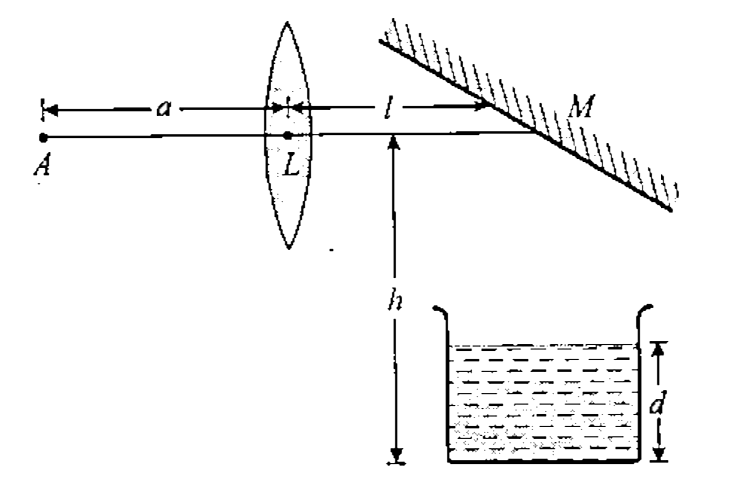
View SolutionThe focal length of a thin biconvex lens is `20 cm`. When an object is moved from a distance of `25 cm` in front of it to `50 cm`, the magni-fication of its image changes from `m_(25) to m_(50)`. The ratio `(m_(25))/(m_(50))` is.
View SolutionAn object is placed 20 cm to the left of a convex lens of focal length 10 cm. If a concave mirror of focal length 5cm is placed 30 cm to the right of the lens, find the magnification and the nature of the final image. Draw the ray diagram and locate the position of the image.
View SolutionA glass sphere with centre O is shown in the figure, AOB and COD are two diameters at right angles to each other. A ray parallel to AOB strikes the sphere at P, a point mid-way between A and C. After refraction, it proceeds along PB. Find
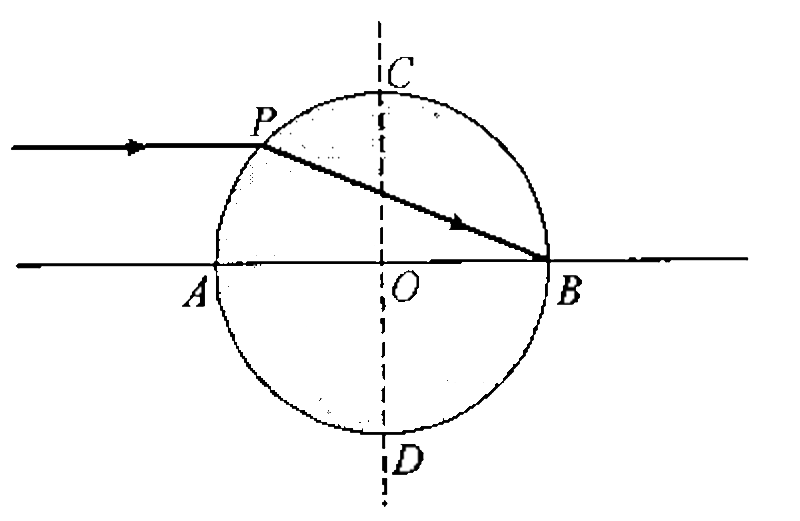
(a) The path of ray beyond B,
(b) The refractive index of glass, and
(c) The deviation of the ray as it emerges out of the sphere.
View SolutionA hollow sphere of glass of inner and outer radii R and 2R respectively has a small mark on its inner surface. This mark is observed from a point outside the sphere such that the centre of the sphere lies in between. Prove that the mark will appear nearer than it really it, by a distance `(mu-1)(R)//(3mu-1)`
View SolutionTwo thin similar watch glass pieces are joined together,front to front ,with near convex portion silvered and the combination of glass pieces is placed at a distance `a=60cm` from a screen.A small object is placed normal to the optical axis of the combination such that its image is two time the object. Now water is filled in between the glass. water`mu=4//3`,calculated the distance through,which the object must be displayed so that a sharp image is again formed on the screen.
View SolutionTwo convex lenses of focal lengths `f_(1) and f_(2)` are placed coaxially, a distance `d` apart. If the axis of one of the lenses is lifted parallel to itself by `Delta`, find the distance by which the focal point is shifted and the distance of the focal point from the first lens.
View SolutionA prism of angle `60^(@)` deviates a ray of light through `31^(@)` for two angles of incidence, which differ by `17^(@)`. What is the refractive index of the glass of the prism ?
View SolutionTwo large plane mirrors OM and ON are arranged at `150°` as shown in the figure. P is a point object and SS' is a long line perpendicular to the line OP. Find the length of the part of the line SS' on which two images of the point object P can be seen.
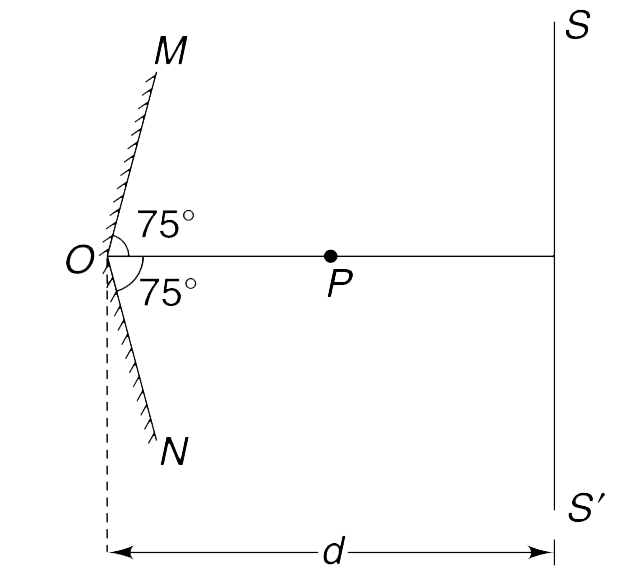
View SolutionA concave lens of focal length 20 cm is placed 15 cm in front of a concave mirror of radius of curvature 26 cm and further 10 cm away from the lens is placed an object. The principal axis of the lens and the mirror are coincident and the object is on the axis Find the position and nature of the image.
View SolutionA double convex lens is placed on a horizontal plane mirror. A pin held horizontally above the lens coincides with its own image when it is 18cm from the lens. The space between the lens and the mirror is filled with glycerine and water, turn by turn, and the positions of coincidence of the pin with the image are 28 cm and 24 cm from the lens, respectively. Calculate the refractive index of glycerine, given that the refractive index of water is 4/3.
View SolutionA prism has refractive index `sqrt((3)/(2))` and refractive angle `90^@`. Find the minimum deviation produced by prism
View SolutionImage of an object approaching a convex mirror of radius of curvature 20m slong its optical axis is observed to move from `(25)/(3)`m to `(50)/(7)`m in 30 seconds. What is the speed of the object in km per hour?
View SolutionA ray is incident on a glass sphere as shown.The opposite surface of the sphere is partially silvered .If the net deviation of the ray transmitted at the partially silvered surface is `1//3^(rd)`of the net deviation suffered by the ray reflected at the partially silvered surface(after emerging out of the sphere).Find the refractive index of the sphere.
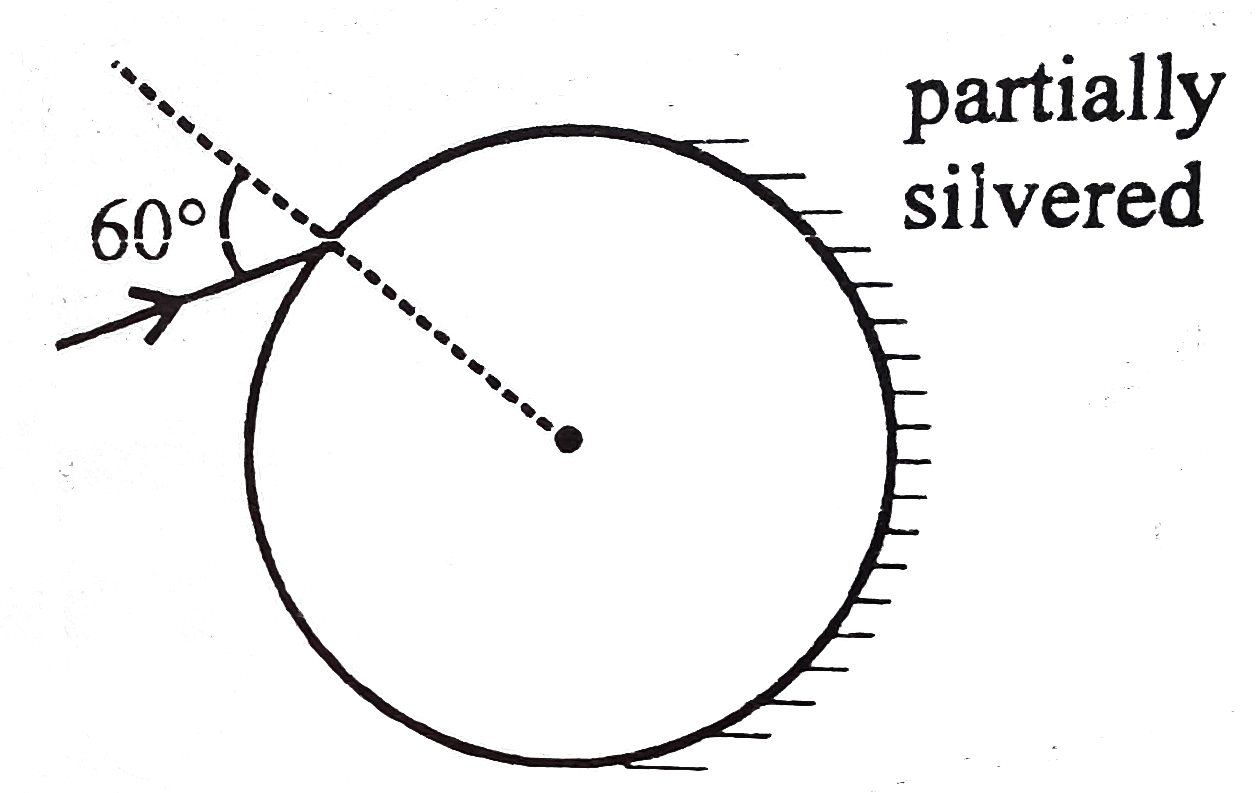
View SolutionLight is incident normally on the short face of a `30^@-60^@-90^@` prism. A liquid is poured on the hypotenuse of the prism. If the refractive index of the prism is `sqrt(3)`, find the maximum refractive index of the liquid so that light is totally reflected.
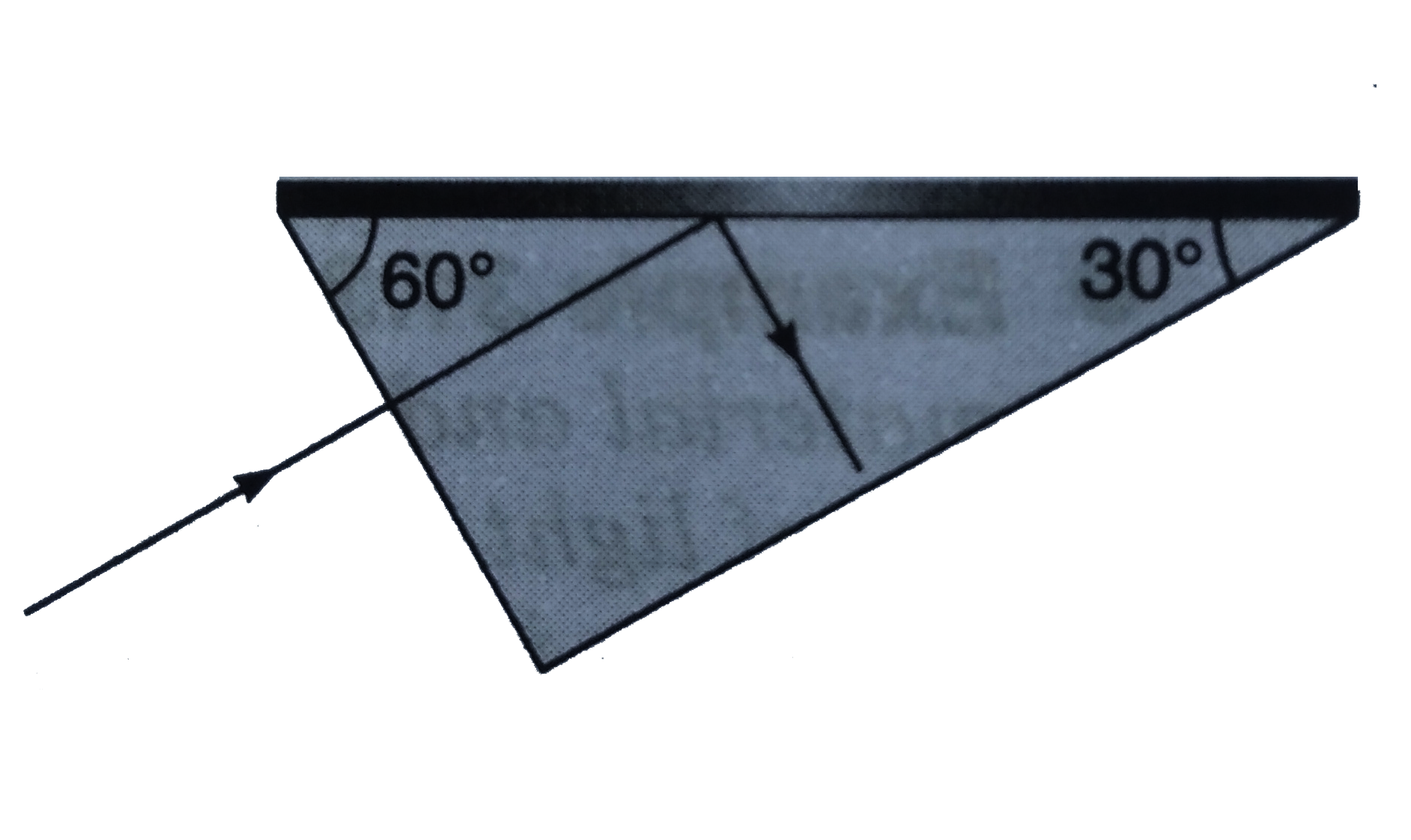
View SolutionA convex lens of crown glass is perfectly cemented to a plano-concave lens of flint glass to form an achromatic combination of power `div 5D`. Calculate the radii of curvature of the convex lens from the following data.
`{:(,"Refractive index",,"Dispersive power"),("Crown glass"," "1.50,," "0.1),("Flint glass"," "1.60,," "0.02):}`
View SolutionA converging system of convex lenses free from chromatic aberration and of focal length 2.5 cm is to be constructed by using a convex lens of focal length 2 cm and dispersive power 0.04 and another convex lens of dispersive power 0.03. What should be the focal length of the second lens and at what distance from the first lens should it be placed ?
View SolutionFor a ray of light refracted through a prism of angle `60^(@)`, the angle of incidence is equal to the angle of emergence, each equal to `45^(@)`. Find the refractive index of the material of the prism.
View Solutionln a biprism experiment, 21 fringes are seen distinctly on a screen at a distance 1 m, when the sources are 0.5 mm apart. What is the coherent length and coherent time of the set-up.` (lamda =6000 Å)`
View SolutionIn a direct vision spectroscope there are two flint glass prisms each of angle `5^(@)` and dispersive power 0.36 and two crown glass prisms of dispersive power 0.24. Calculate the angle of each crown glass prism and the net dispersion produced by the system of prisms. `(mu_("crown")=1.5 and mu_("flint")=1.68)`
View SolutionAn achromatic doublet of focal length 50 cm is used as an objective of a telescope. The refractive indices of the glasses of the lenes for yellow are 1.6 and 1.5. The radius of curvature of the sides on contact is 15 cm. Find the radii of curvature of the other surfaces. The dispersive powers of the glasses are 0.33 adn 0.24.
View SolutionA ray of light incident normally on one of the faces of a right-angle isosceles prism is found to be totally reflected as shown in the figure. What is the minimum value of the refractive index of the material of the prism? When the prism is immersed in water, trace the path of the emergent ray for the same incident ray, indicating the values of all the angles `(mu_omega=4//3)`.
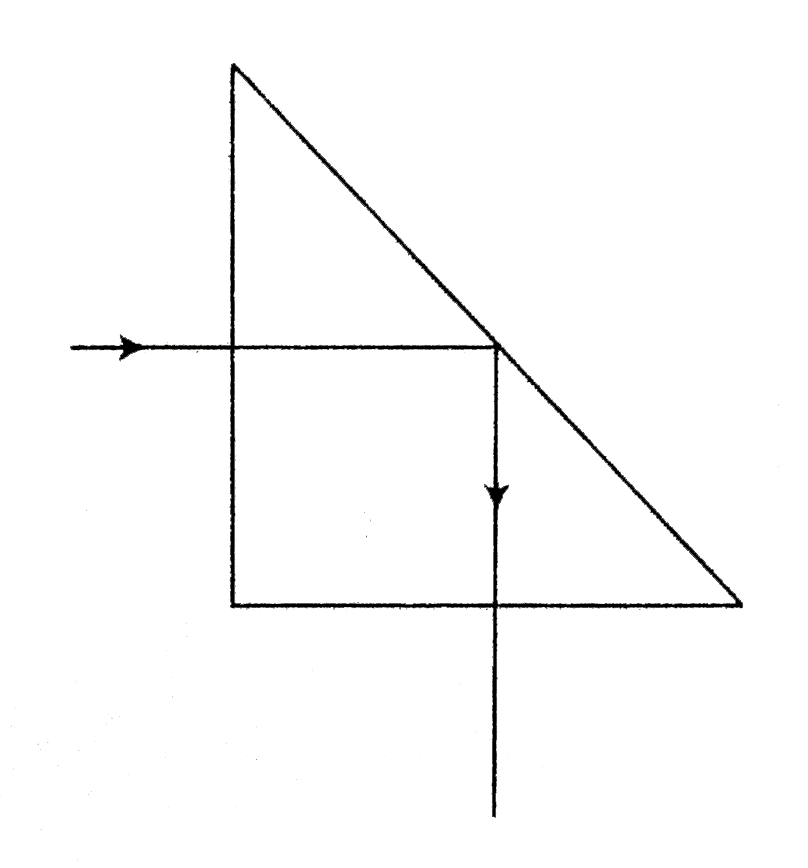
View SolutionIn a double slit experiment ,the separation between the slits is `d=0.25cm` and the distance of the screen `D=100`cm from the slits .if the wavelength of light used in `lambda=6000Å`and `I_(0)`is the intensity of the central bright fringe.the intensity at a distance `x=4xx10^(-5)`in form the central maximum is-
View SolutionThe focal lengths of the objective and eye-piece of a compound microscope are 1 cm and 5 cm, respectively. An object is placed 11 mm from the objective and the final image is 25 cm from the eye. Find :
(a) magnification produced and
(b) the separation of the lenses.
View Solution
Unsolved Numerical Problems questions and complete solutions for chapter GEOMETRICAL OPTICS of GK PUBLICATIONS PHYSICS (HINGLISH) of Class 12
All Exercises from PHYSICS GALAXY Class 12 PHYSICS GEOMETRICAL OPTICS
- Advance MCQs with One or More Options Correct
- Conceptual MCQs Single Option Correct
- Discussion Question
- Illustrative Example
- Numerical MCQs Single Options Correct
- Practive Exercise 5.1
- Practive Exercise 5.2
- Practive Exercise 5.3
- Practive Exercise 5.4
- Practive Exercise 5.5
- Practive Exercise 5.6
- Practive Exercise 5.7
- Practive Exercise 5.8
- Practive Exercise 5.9
- Unsolved Numerical Problems